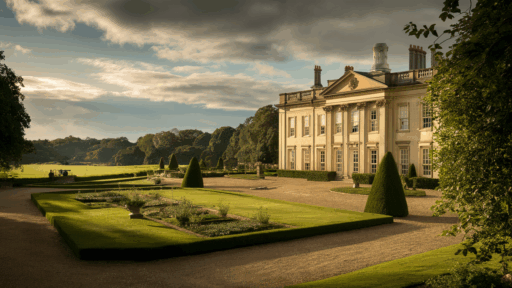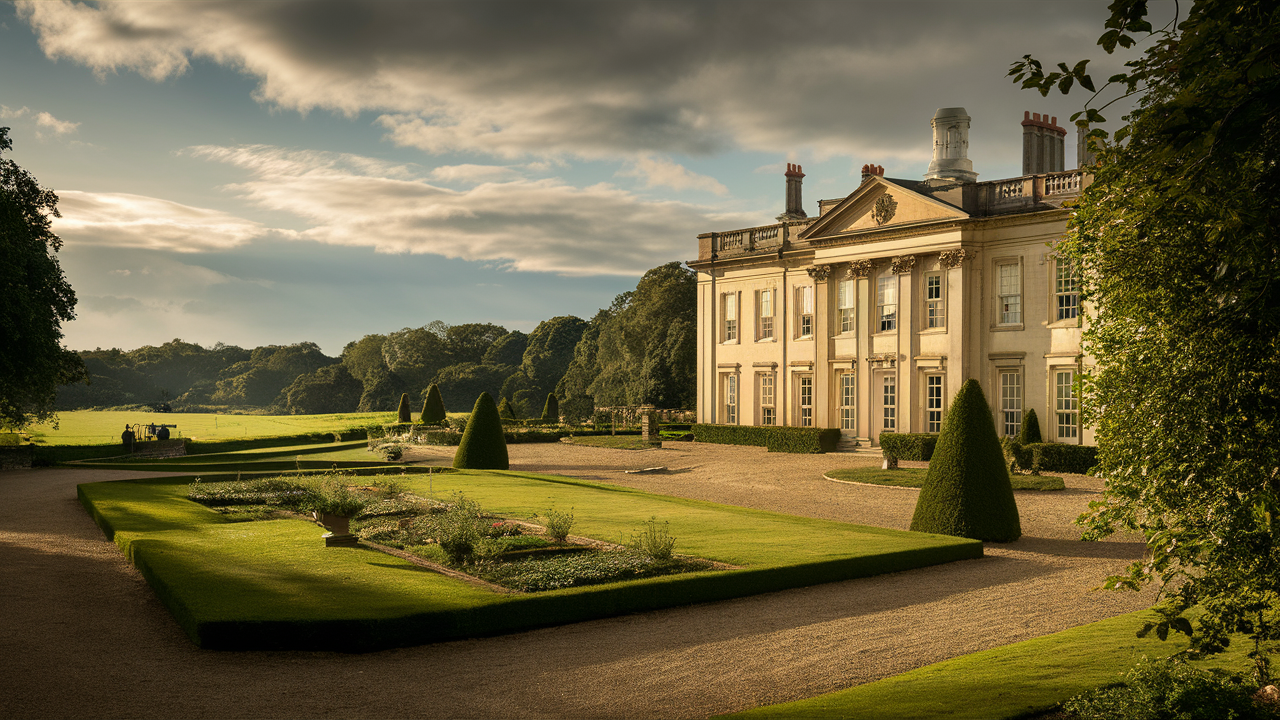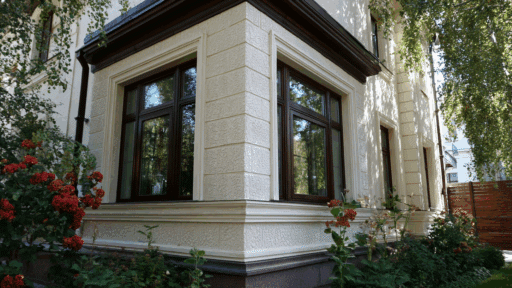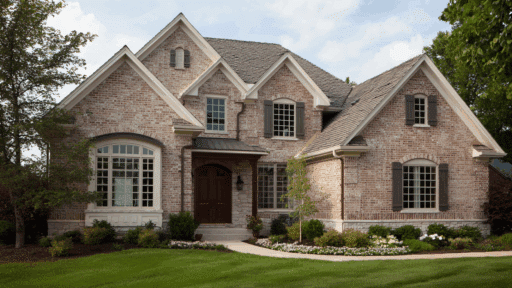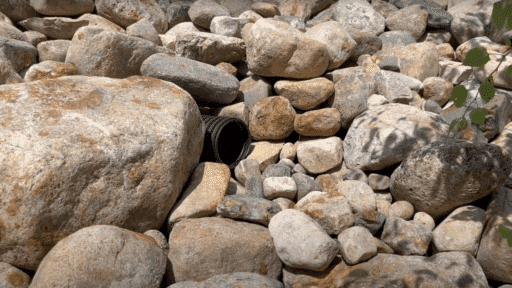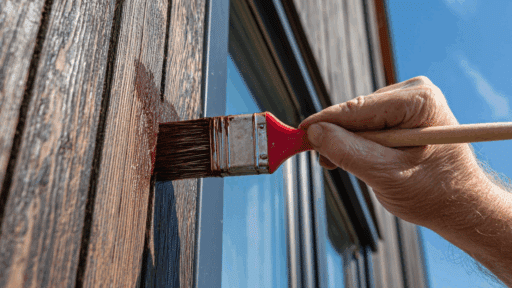The English country house represents one of Britain’s most significant architectural legacies, embodying centuries of social development, artistic excellence, and cultural heritage.
These grand estates functioned as far more than simple homes – they were centers of influence, markers of social standing, and venues for the intricate theater of British life.
From medieval manor houses to Georgian mansions, each structure tells a story of changing tastes, evolving lifestyles, and shifting power structures.
These buildings housed generations of families who shaped British history, politics, and culture, while their gardens, libraries, and halls witnessed countless moments that defined a nation’s character and identity.
What Is an English Country House?
An English country house is a large residential building located in rural settings, typically surrounded by extensive grounds including gardens, parkland, and often working farmland.
These structures differ significantly from simple cottages or urban mansions in their purpose and social function.
Key Characteristics:
- Substantial size with multiple wings and floors
- Rural location with significant acreage
- Architectural grandeur reflecting the owner’s wealth and taste
- Integration with designed landscapes and gardens
- Historical role as centers of local governance and social life
Initially serving as private residences for aristocratic families, many now function as heritage sites, museums, or event venues, preserving their historical significance for future generations.
History Roadmap
The evolution of English country houses spans nearly a millennium, reflecting the changing fortunes, tastes, and social structures of British society.
Each historical period left its distinctive mark on these architectural monuments, from medieval fortresses to Georgian palaces.
The development of the country house mirrors broader historical movements, including the Renaissance, the Industrial Revolution, and the two World Wars.
Understanding this chronological progression reveals how these buildings adapted to serve the needs of their times while maintaining their role as symbols of power and prestige.
1. Origins and Medieval Beginnings
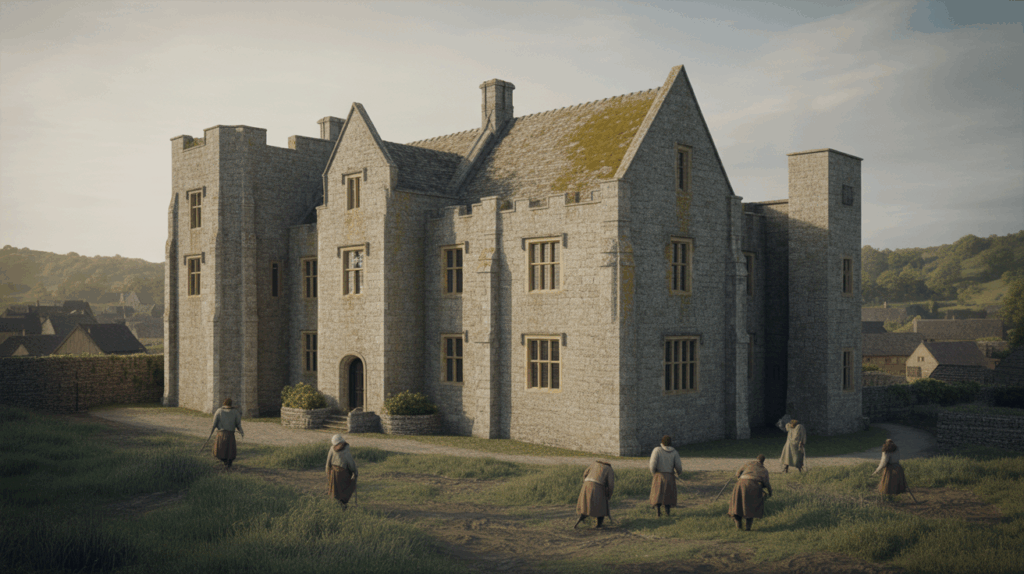
The roots of the English country house trace back to the Norman Conquest of 1066, when new landowners established manor houses as both homes and administrative centers.
These early structures prioritized defense and functionality over comfort, featuring fortified walls, great halls for communal dining, and solar chambers for private quarters.
The feudal system placed these houses at the heart of rural communities, where lords managed vast estates and exercised judicial authority over local populations.
2. The Tudor and Elizabethan Transition
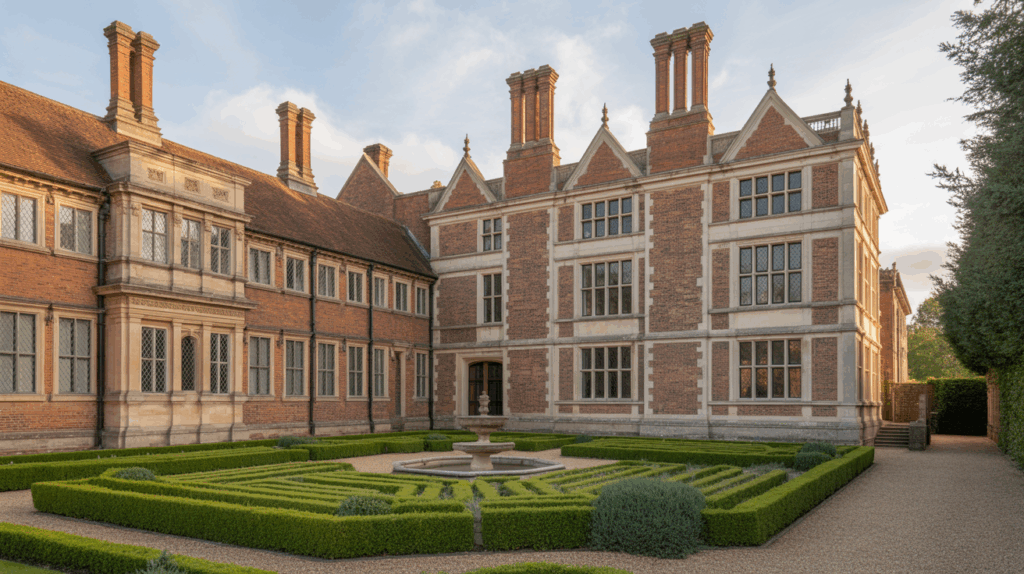
The 16th century marked a significant shift from fortification to comfort and display. Peace brought stability, allowing wealthy families to focus on luxury rather than defense.
Tudor Innovations:
- Larger windows with diamond-paned glass
- Elaborate chimney stacks as decorative features
- Long galleries for exercise and entertainment
The Elizabethan period introduced Renaissance influences from continental Europe, emphasizing symmetry, proportion, and classical details while maintaining distinctly English characteristics.
3. Golden Age – The Stuart and Georgian Periods
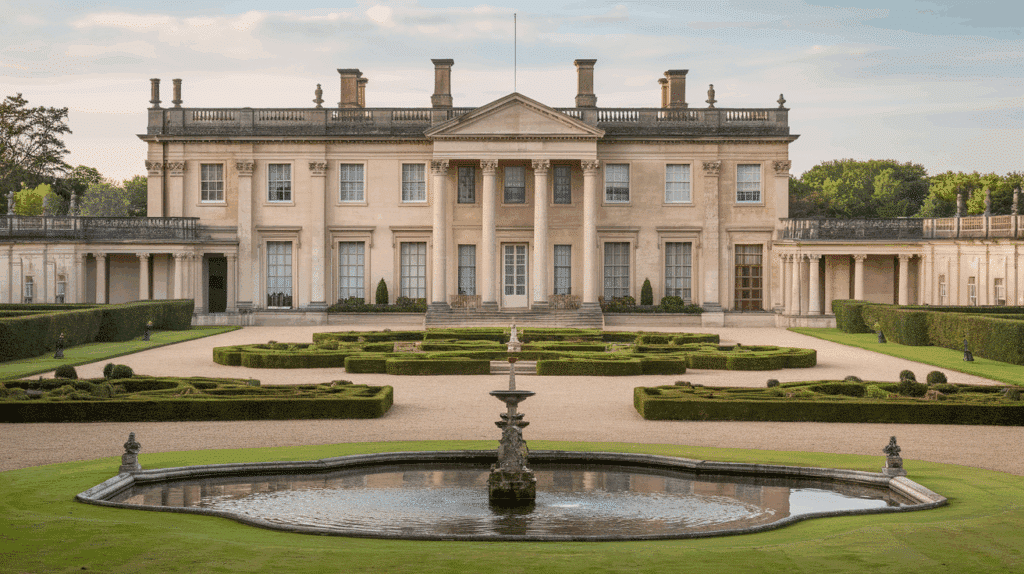
The 17th and 18th centuries represent the pinnacle of English country house development, characterized by classical architecture and sophisticated landscape design.
Architectural Styles by Period:
| Period | Years | Key Features | Notable Architects |
|---|---|---|---|
| Early Stuart | 1603-1649 | Jacobean details, classical proportions | Inigo Jones |
| Restoration | 1660-1688 | Baroque influences, grand staircases | Christopher Wren |
| Georgian | 1714-1830 | Palladian style, symmetrical facades | William Kent, Robert Adam |
They were integrated with designed landscapes, connecting architecture and nature through formal gardens and parkland. Interiors showcased elaborate decoration with fine plasterwork, painted ceilings, and quality materials.
Most importantly, these houses introduced specialized rooms for specific functions – libraries, music rooms, and drawing rooms.
4. The Victorian Era and Industrial Influence
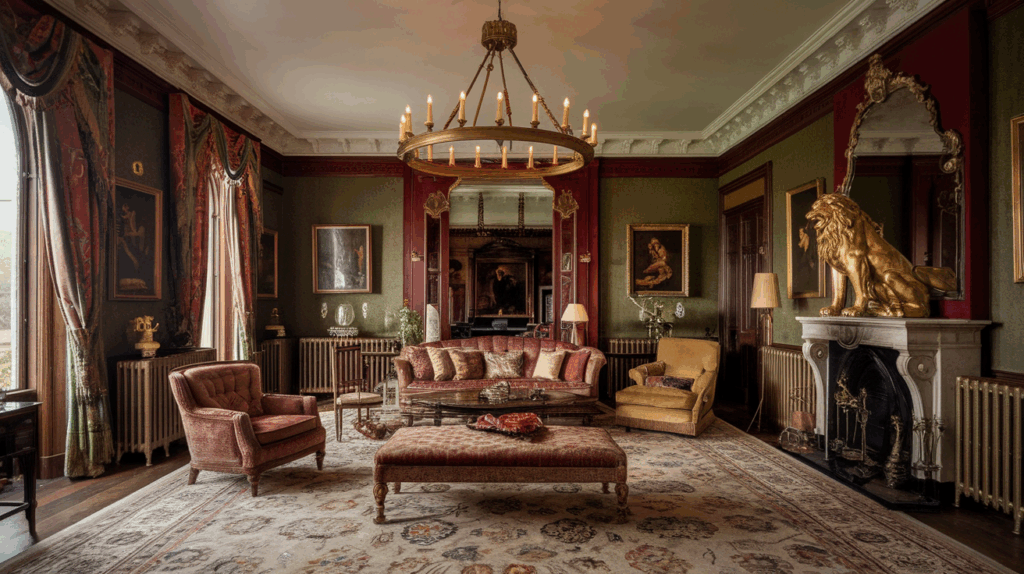
The 19th century brought unprecedented wealth from industrial expansion, enabling a new generation of wealthy families to build country houses.
This period saw eclectic mixing of architectural styles, incorporation of Gothic Revival and Italianate elements, and modern conveniences like gas lighting and central heating.
The Industrial Revolution provided new building materials and techniques, allowing for more ambitious architectural projects.
5. Decline in the 20th Century
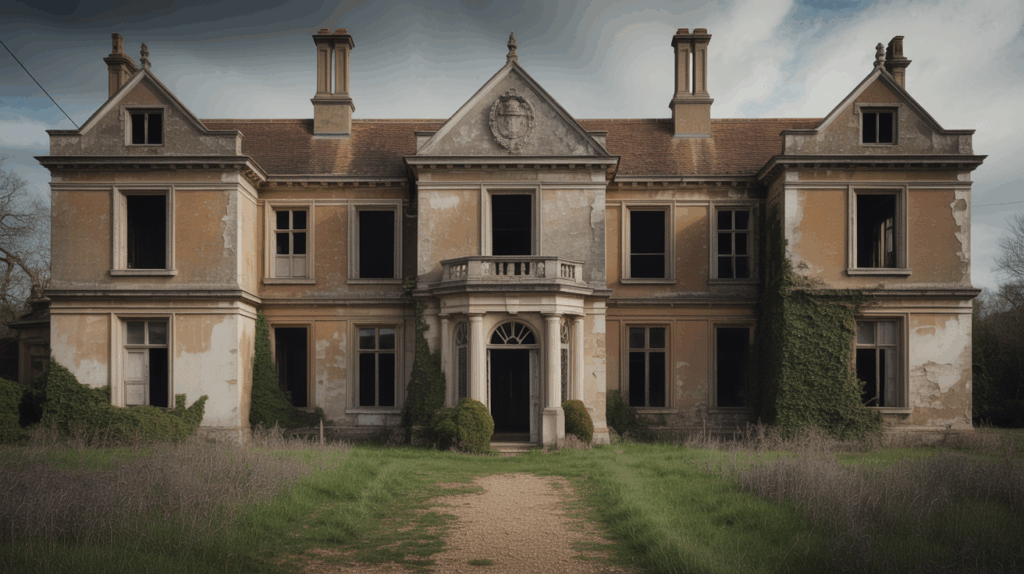
The two World Wars and changing social structures led to a crisis for many country houses. Economic pressures, death duties, and the collapse of the traditional landed gentry system threatened these architectural chests.
Consequently, numerous houses were demolished, abandoned, or sold to institutions, marking the end of an era that had defined British aristocratic life for centuries.
Statistical Impact:
- 1875: Approximately 4,000 country houses in Britain
- 1975: Nearly 1,000 had been demolished
- Today, around 3,000 survive in various conditions
The establishment of the National Trust in 1895 and similar organizations became crucial for preservation efforts.
Cultural Significance and Literary Legacy

English country houses have profoundly influenced literature, film, and popular culture, serving as settings that embody themes of class, tradition, and social change.
1. Literary Connections
English country houses have provided rich settings for literature and popular culture. Jane Austen’s novels feature country house settings like Pemberley and Mansfield Park as backdrops for social drama.
Wodehouse’s Blandings Castle series brought humor to the tradition, while Evelyn Waugh’s Brideshead Revisited portrayed aristocratic decline.
Modern adaptations like Downton Abbey and Bridgerton have introduced these settings to contemporary audiences, showcasing both the splendor and social complexities of country house life.
2. These Narratives Often Find
Country house literature finds complex social themes that reflect broader British society. The relationship between servants and masters reveals class hierarchies and mutual dependencies that defined household life.
Marriage, inheritance, and social mobility drive many narratives, as characters navigate the rigid expectations of aristocratic society.
The tension between tradition and modernity appears frequently, particularly as old ways clash with changing times and values.
3. Regional Distribution
| Region | House | Notable Features |
|---|---|---|
| Derbyshire | Chatsworth House | Sculpture garden, historic library |
| Oxfordshire | Blenheim Palace | Birthplace of Winston Churchill |
| Hampshire | Highclere Castle | Downton Abbey filming location |
| Hertfordshire | Hatfield House | Jacobean architecture, royal connections |
| West Sussex | Petworth House | Turner paintings, Deer Park |
Each property offers unique insights into different periods of English history and architectural development.
Modern Use and Preservation

Today’s country houses serve diverse purposes while maintaining their historical character:
Current Functions
Many English country houses have found new purposes, ensuring their survival in the modern era. Museums and heritage sites preserve these buildings for public education, often maintained by organizations like the National Trust.
Wedding and event venues capitalize on their romantic settings, providing income for maintenance. Some remain private residences with public access, while others have become luxury hotels and conference centers.
Additionally, their architecture makes them popular film and television locations, generating revenue while showcasing British heritage to global audiences.
Preservation Challenges
High Costs Annual maintenance typically costs £1-2 million, requiring specialized materials and expert craftspeople that standard buildings don’t need.
Access vs. Preservation Managers must balance visitor impact with public engagement, as crowds and handling can accelerate building deterioration.
Modern Updates: Installing accessibility features, safety systems, and visitor amenities in historic structures without compromising architectural integrity.
Climate Threats: Extreme weather, flooding, and temperature changes increasingly damage historic materials like stone, timber, and plaster.
Limited Funding Insufficient resources force difficult choices about which essential repairs to prioritize or delay.
These interconnected issues require specialized knowledge and creative solutions to preserve historic properties while serving modern needs.
Fact Check: Common Misconceptions
While country houses continue to fascinate us, it’s worth examining some common assumptions we might hold about these estates.
Popular culture and period dramas, though entertaining, may have shaped our understanding in ways that don’t always reflect the historical record.
| Myth | Reality |
|---|---|
| All country houses belonged to ancient noble families | Many were built by “new money” from trade, industry, or colonial ventures |
| These houses were always open to visitors | Public access is essentially a 20th-century development for financial sustainability. |
| All country houses are enormous | Sizes vary greatly, from modest manor houses to palace-scale estates |
These examples remind us that the story of country houses is more nuanced than we might initially think.
Rather than diminishing their appeal, understanding these realities perhaps gives us a richer appreciation for how these estates have adapted and survived through changing times and circumstances.
Final Thoughts
English country houses represent far more than architectural achievements; they embody centuries of British history, social evolution, and cultural expression.
From medieval fortifications to Georgian palaces, these structures tell the story of a nation’s changing values, aspirations, and relationships with land and power.
Whether experienced through literature, film, or personal visits, these remarkable buildings continue to inspire and educate.
They remind us that architecture serves not just practical needs but also expresses our deepest cultural values and social structures.
Have you visited an English country house? Comment: What aspects of their history and architecture intrigue you most?

